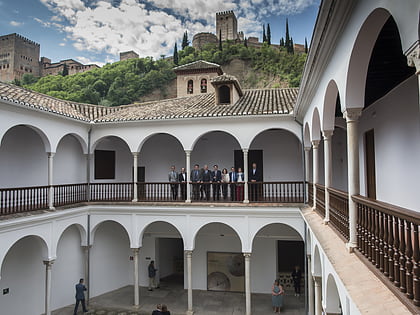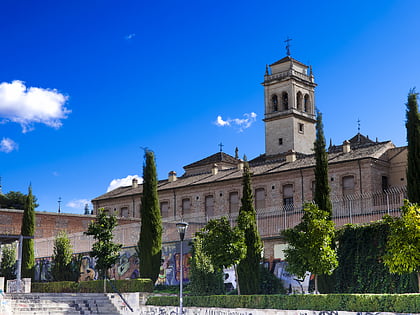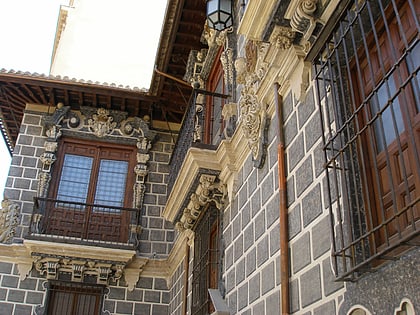Puerta Monaita, Granada


Facts and practical information
The Monaita Gate, in Arabic bab al-Unaydar, whose translation would be Puerta de la Erilla, also known as Puerta de la Alhacaba, was one of the oldest entrances to Granada, and the main entrance to the alcazaba Qadīma or Old Alcazaba, in the Albaicín quarter.
It is part of the Zirid wall, which linked it to the west with the Elvira Gate and to the east with the Weights Gate.
It was built in the eleventh century coinciding with the transfer of the capital of the emirate from Medina Elvira to Medina Garnata. It underwent several transformations during the Nasrid rule and even during the Christian period. It was quoted by al-ʿUmarī in Masālik al-Absār fī Mamālik al Amsar, Hurtado de Mendoza in Guerra de Granada and Mármol Carvajal in Historia del rebelión y castigo de los moriscos and it is perfectly represented in the Plataforma de Vico with the number 47 and the name "Monaica".
Next to some sections of the surrounding wall and the tower that flanks it, the main doorway is preserved, consisting of two horseshoe arches with opposing groined arches and separated by a brick barrel vault. The arches, framed by alfiz and slightly pointed, are formed by voussoirs of sandstone from La Malahá, imposts of stone from Sierra Elvira, brick lintels and jambs of freestone. Between the two arches, under the brick vault were the two door leaves, which were made of wood lined with iron. This entrance led to a small quadrangular courtyard measuring 6 x 6 metres, enclosed by walls and used as a guardhouse, from which there was access to the citadel through another doorway in a bend, of which there are hardly any traces left. It was one of the first gates in al-Andalus with this defensive system. Access from the present-day Carril de la Lona was via three zigzagging ramps, nowadays staggered, which, together with the entrance in a bend, made it practically impregnable.
A defensive tower flanks the north side, left as you enter. It is built with lime concrete and in recent times a masonry cladding was added to its west façade with brick banding and limestone stonework at the corners.
In 1931 it was declared a National Historic and Artistic Monument and was restored in 1998-1999, although it is somewhat abandoned and subject to acts of vandalism, as conservationist and neighbourhood associations have repeatedly pointed out.
Puerta Monaita – popular in the area (distance from the attraction)
Nearby attractions include: Cathedral of Granada, Royal Chapel, Albaicín, El Bañuelo.
Frequently Asked Questions (FAQ)
Which popular attractions are close to Puerta Monaita?
How to get to Puerta Monaita by public transport?
Bus
- Carril de la Lona 1 • Lines: C31, C32 (1 min walk)
- Mirador de San Cristóbal • Lines: Granada City Tour - Ruta Diurna, Granada City Tour - Ruta Nocturna (3 min walk)
Tram
- Estación Ferrocarril • Lines: L1 (16 min walk)
- Universidad • Lines: L1 (16 min walk)
Train
- Granada (19 min walk)











